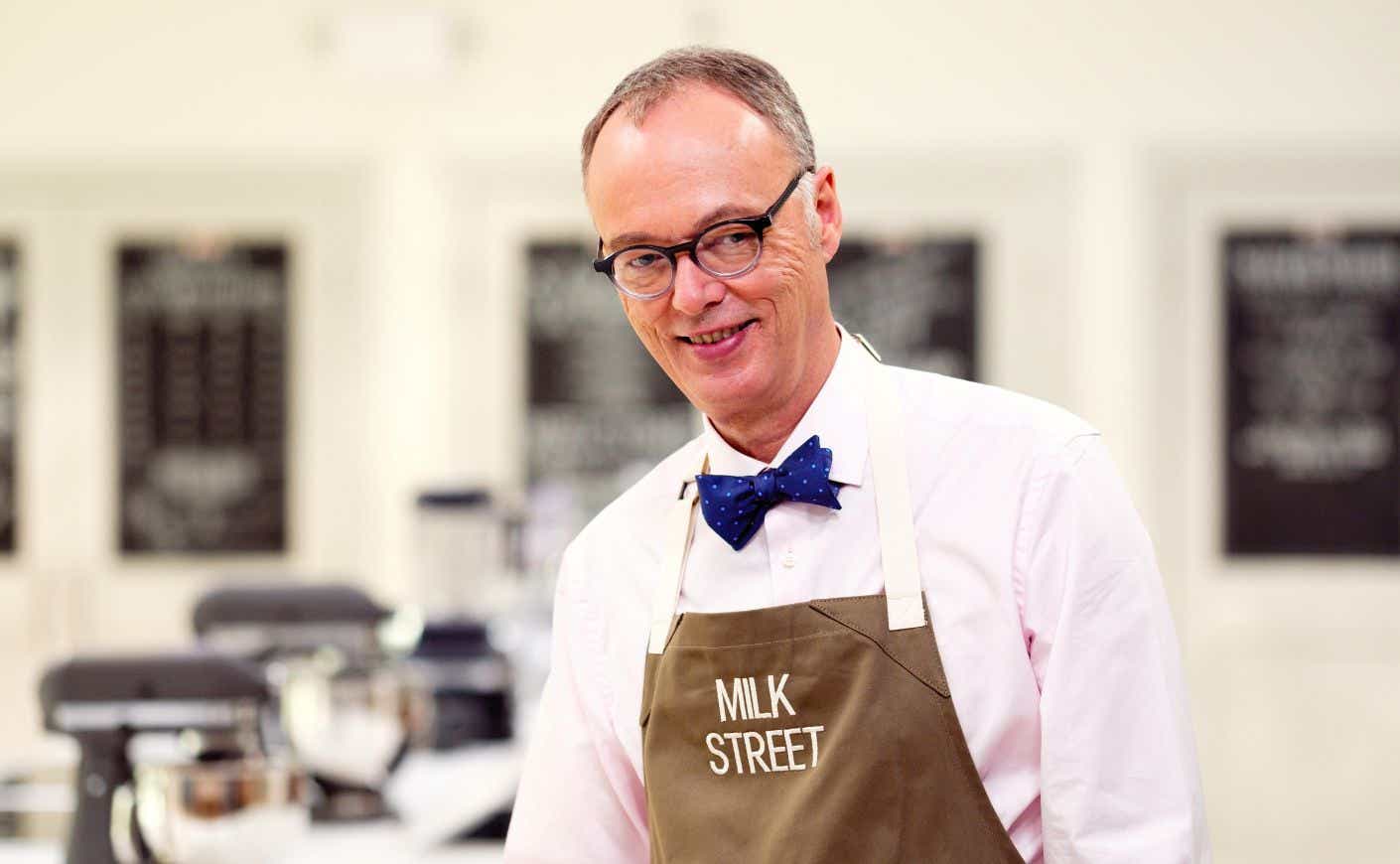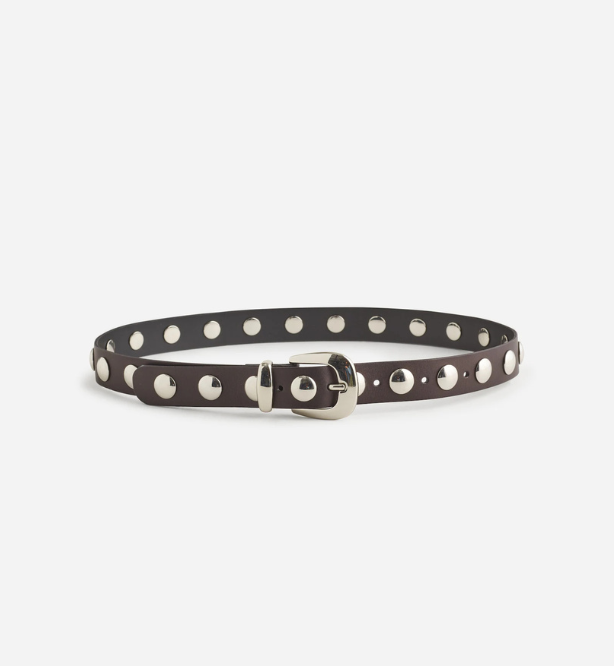You know the weeknight drill: Thawing chicken thighs and boiling rice so you can mindlessly make one of three standard fuss-free dinners. Or maybe you’re prepping the lasagna recipe you’ve been cranking out since the Clinton administration. Or perhaps you’re tossing last night’s leftovers in the microwave to avoid cooking completely. We get it — there’s no shame in a culinary rut, a spell of repetition or boredom, or ignoring recipes that seem too complex to even approach.
While our relationships with our kitchens can be complicated, they can also be lifelong love affairs that offer comfort and consistent joy. Chopping and simmering are true pleasures to some, but it can be tough to shake yourself out of a routine. So how can you continue to challenge and entertain yourself after years of whipping up the same meals (and maybe even shying away from unfamiliar fare)?
To glean some expert advice, we consulted veteran chef Christopher Kimball, founder of Christopher Kimball’s Milk Street — a multifaceted brand that produces cookbooks, recipes, online cooking classes, and more (and which celebrates its 10th anniversary later this year). Kimball gave us advice for tackling one notoriously difficult kitchen skill before spilling the beans (and the paprika) on the seasonings and ingredients that you can use to reinvigorate your pantry. Plus, he’s got opinions on how to embrace exciting, maybe-new-to-you cuisines from around the world.
KCM: What’s a kitchen skill that people overestimate the difficulty of learning, and how can they tackle it?
Christopher Kimball: Using a knife properly. And 70% to 80% of all home cooks — based on a survey I did a while back — have never sharpened their kitchen knives, ever, which is kind of frightening. People have these big, heavy European or German knives and they’re dull, which makes them extremely dangerous. But prep is 90% of cooking, right? And if you don’t have a sharp knife, it’s hard to do the prep.
It doesn’t matter if you use smaller knives or big knives — just make sure you sharpen them. You can buy inexpensive, nice sharpeners that work pretty well. And don’t sweat the small stuff: Chop the onion or the garlic however you like — unless the onion will be raw and in a salad, nobody cares about big or small pieces.
What’s your advice for transitioning from strictly following recipes, to experimenting with seasonings and ingredients to make a recipe your own?
It’s kind of like music. People want to be creative and make a recipe their own, the same way they want to make a song their own. But you’re probably better off following recipes until you really understand a recipe well. If you want to make a recipe your own, the first step is to know the recipe so well, you don’t have to follow it.
With a simple stir fry, for example, there’s a regular process: You marinate the meat, then you saute it, you take [the meat] out and put the vegetables in — then you make space in the middle, you put the garlic and ginger in, add the sauce, and add the meat back. Once you get that basic concept, then you can say, “I’ll add fish sauce to this, I’ll add toasted sesame.”
Secondly, play with flavors rather than technique. The best way to do this is at the end of your cooking, which is what lots of people don’t do. Chefs do this every day — you’re about to serve a soup or a stew or a braise, so you taste it and adjust the salt level. You might also want to add something slightly sweet, or something sour — a little vinegar. You might want to add some ginger or garlic, chopped scallions, pomegranate molasses — anything like that. So you can adjust a recipe and take it from bad to good — or good to great — in the last two minutes.
That last two minutes are the most important minutes of any dish, other than reading the recipe in full before you start. So have a well-stocked pantry with 10 or 15 fermented sauces, chilies, and spices. Those are the things you can use easily to alter a recipe to make it your own, without fundamentally changing its nature.
What are some essential pantry ingredients that you always have in stock?
Besides the obvious suspects, I think smoked paprika is the best spice ever because it can make things taste like you grilled or barbecued them — it’s also terrific as a rub. Pomegranate molasses is a great thing to have around; it’s slightly sweet, but very sour at the same time.
A whole bunch of different chili sauces, like gochujang and harissa, are also nice to have. And there are two kinds of dried peppers I love — ancho and guajillo — that don’t have a lot of heat and add tremendous depth of flavor.
Most vinegar is terrible because the acidity is too high, six or seven percent. Having a low-acid vinegar like a rice wine vinegar is great. My favorite vinegar in the world is calamansi vinegar — calamansi is a sour orange. I take olive oil, sprinkle a little calamansi vinegar on it, some coarse salt, and some zaatar. Throw that on salad greens and you’re good to go.
Which kitchen tools are worth spending a little extra on, if you want to improve as a home cook?
Earlier in my career, I bought every tool there was — I was obsessed. But over the years, I’ve cut down. I’d recommend simply investing in a really good cutting board. Hasegawa out of Japan makes the world’s best cutting boards. They’re soft, but they have a wood interior and a plastic exterior — it’s like a yoga mat, but hard on the outside. That material absorbs the knife blows and makes you better at prep.
And as I mentioned before, a knife sharpener is important. For 30 or 40 bucks, you can buy the Suehiro knife sharpener, which does a pretty good job. Or you can spend $150 on an electric knife sharpener. Either way, having a knife sharpener is really critical. And having a good utility knife that’s maybe 6 inches long — not 10 or 8 — with a good handle.
How can you experiment with adding complexity to your cooking when your family is full of picky eaters?
You need to cook good food that you’re excited about. If people don’t like spicy food, then you use about a third of the spice called for in the recipe — you can always add it back later. And if someone has an allergy, fine. But I’m not going to not use lemongrass because someone doesn’t like lemongrass.
What type of cuisine would you suggest as a good gateway for learning to make foods you aren’t used to?
If you want a totally different way of thinking about food and cooking, you’re probably going to end up in Vietnam, Thailand, or Malaysia. The way they think about putting food together is completely different from what many of us are used to. The French method, which is really the basis for most cooking in America, is based on time, technique, and heat. You use herbs, but not in abundance. There are no chilies and no fermented sauces — you use fairly bland ingredients and very few spices.
But an Asian stir fry takes just five minutes, and you have soy sauce, toasted sesame, garlic, and ginger — a lot of big flavors. I would go to the East and look at those cultures’ cuisines, because they start big, they end big, and everything else in between is not as complicated and time-consuming — generally speaking — as the French or Northern European methods of cooking.
All cooking around the world is the same, in that it’s whatever someone is making for dinner — to them, it’s not weird, it’s not different, it’s not “ethnic,” whatever that means. It’s just what they cook for dinner and what they had available. But if you spend time with someone from a different food culture, then you realize, They’re thinking about this whole process totally differently than I do. That’s when you realize you don’t know very much about cooking to start with. For example, the Japanese language and English language are very different and the way we think about language is different. The same thing is true in the culinary arts. Each country comes with a totally different mindset — that’s what makes cooking so fascinating.












